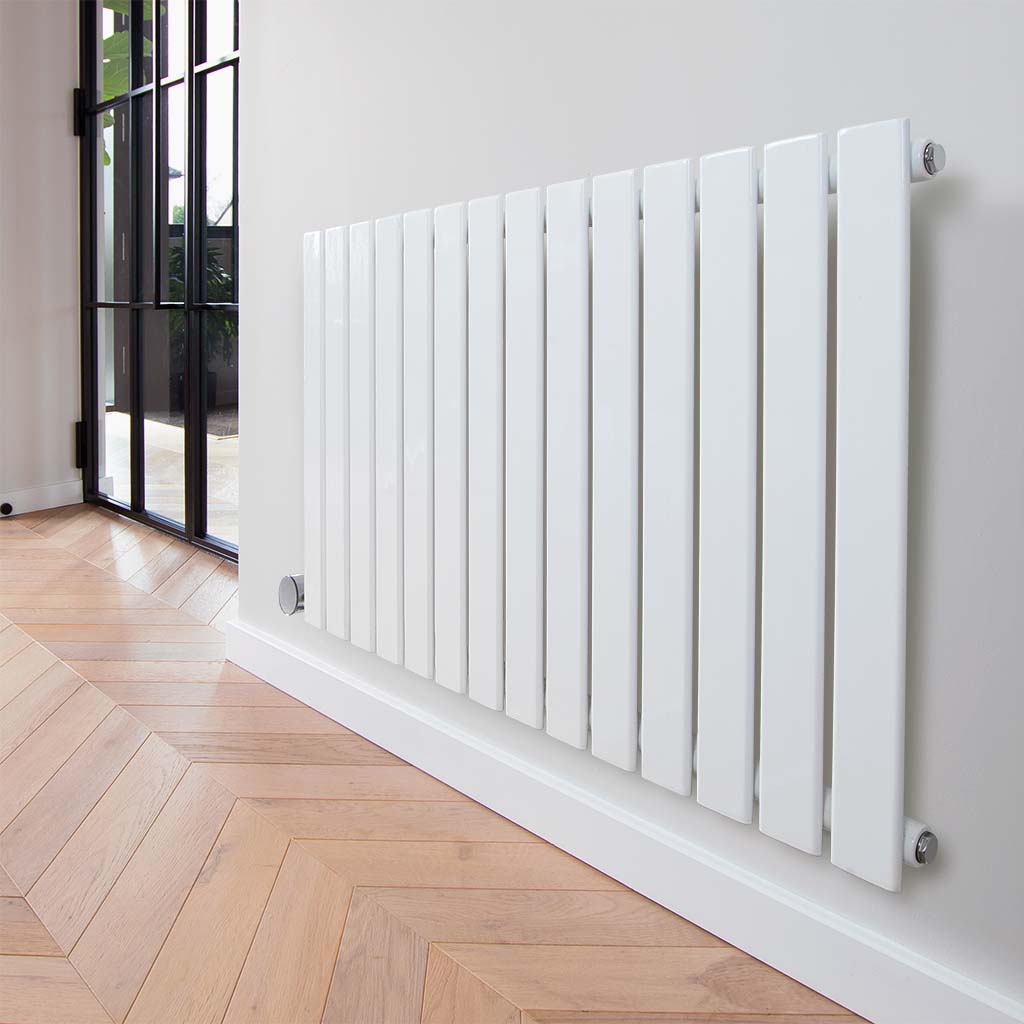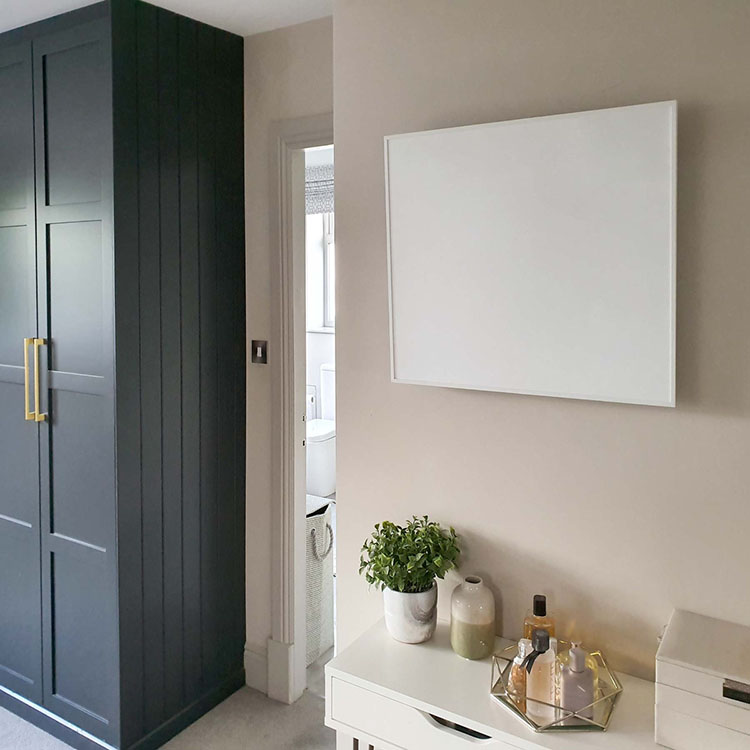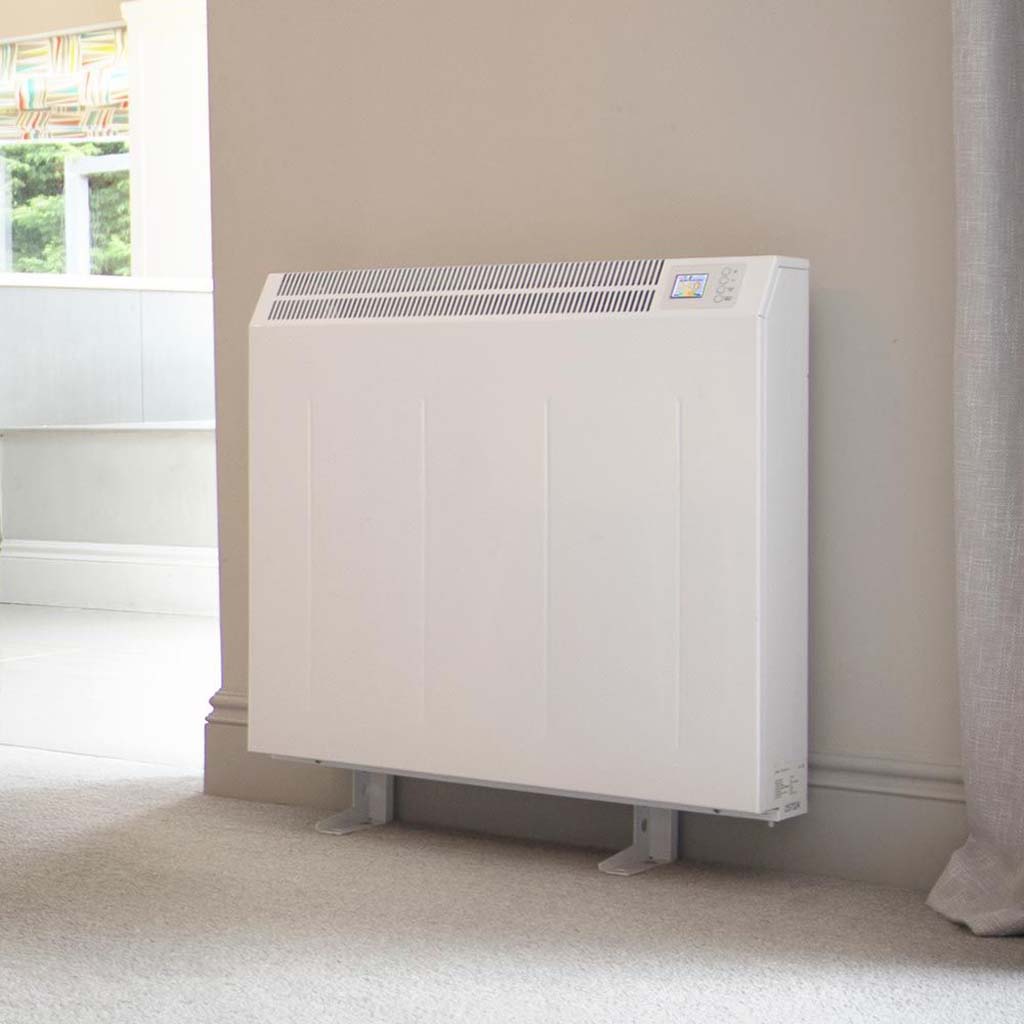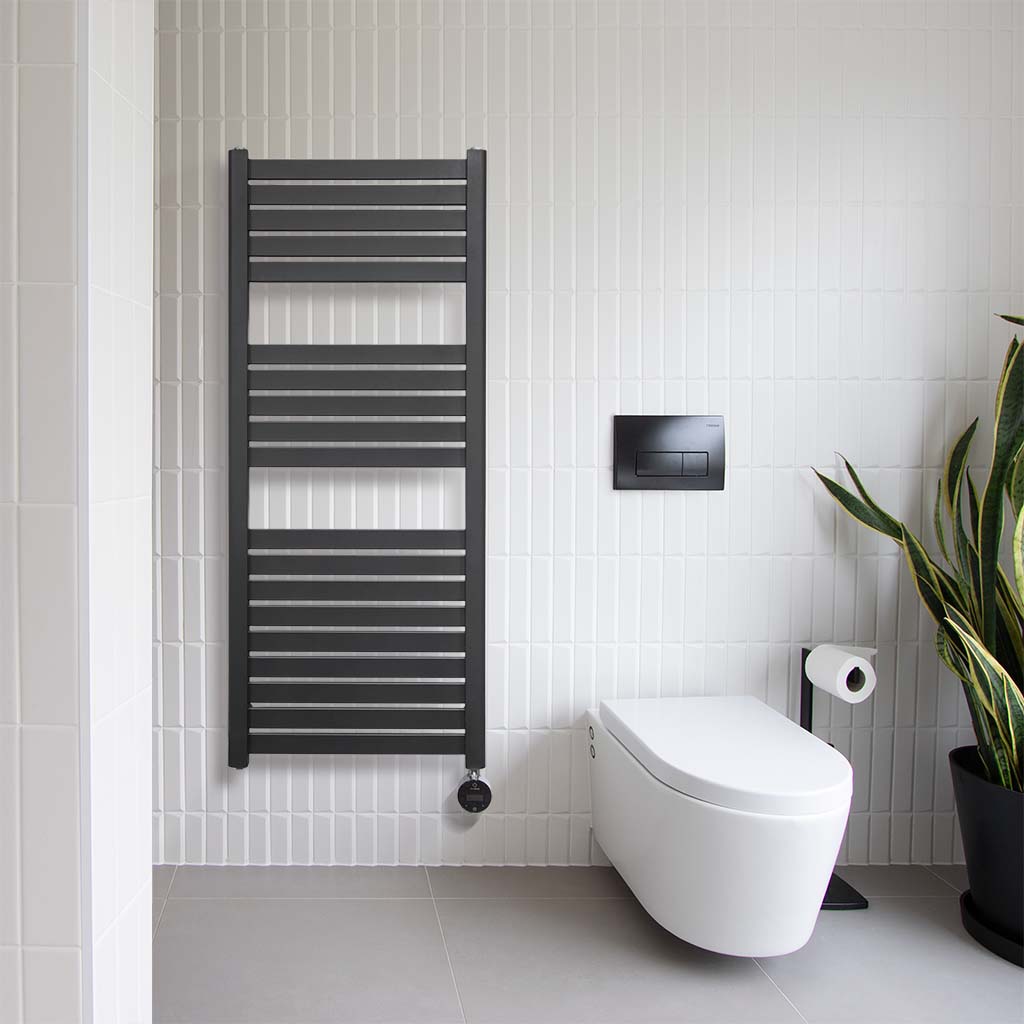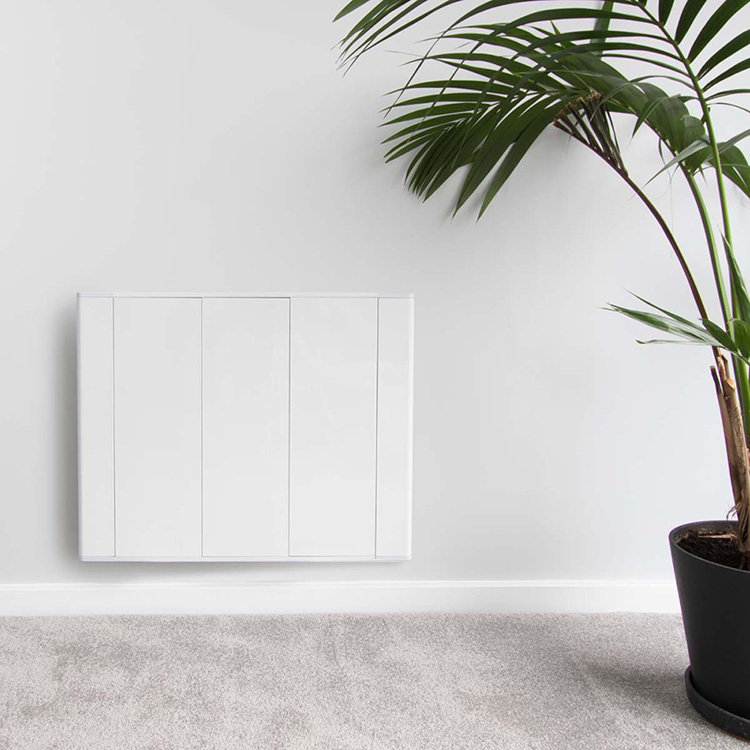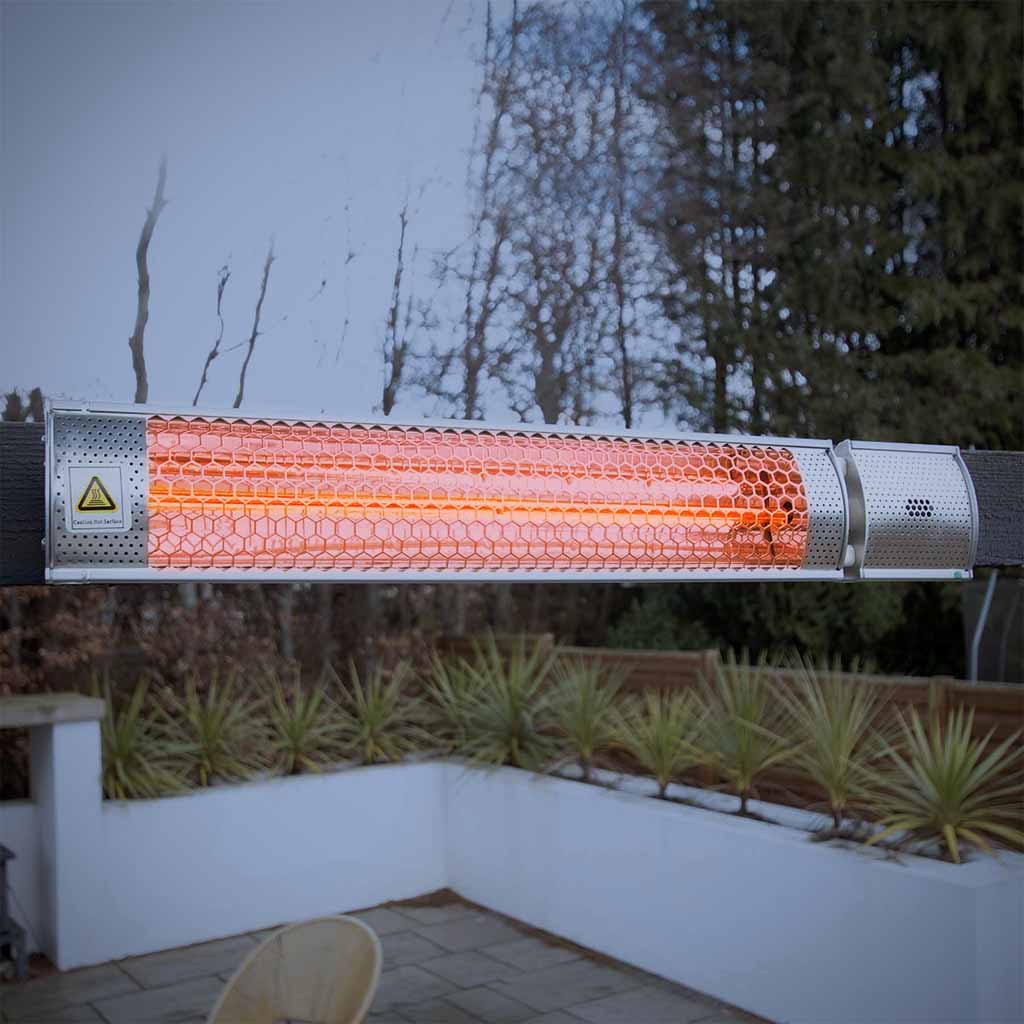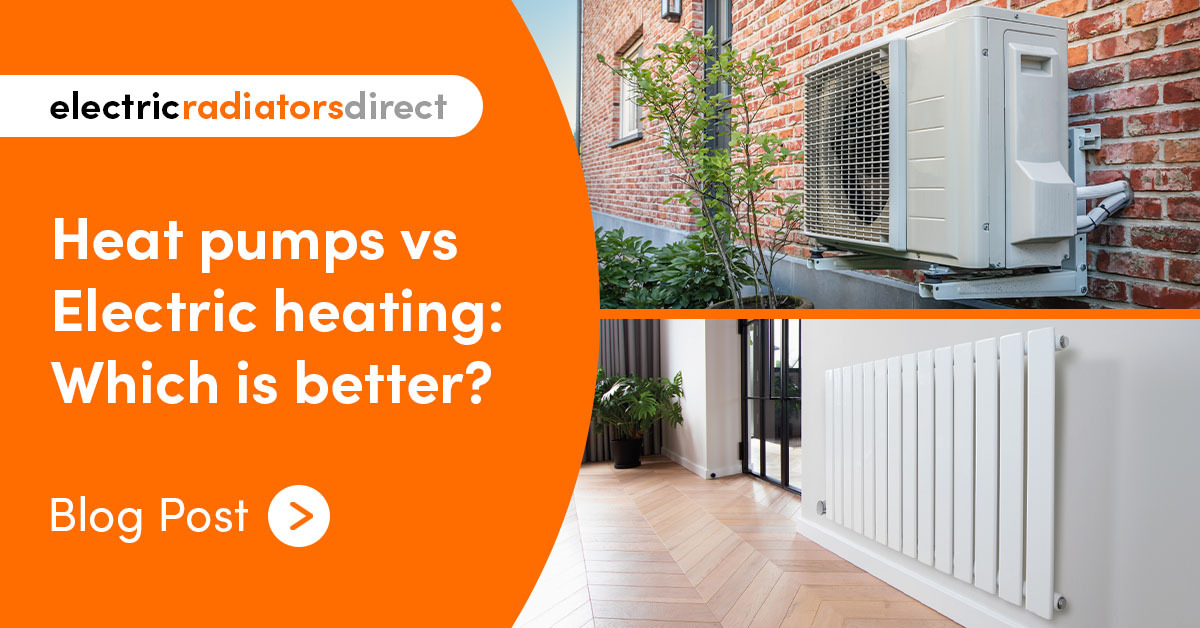

On the road to Net Zero, how best to heat our homes has become the hottest of topics. As renewable energy becomes more common, low-carbon alternatives like heat pumps and electric heating have become the clear choice for a sustainable future. While their efficiency cannot be understated, both differ greatly in how they actually operate, affecting things like installation, maintenance, and feasibility in a standard UK household. So, which is better? Read on as we go over how they work, their pros and cons, and see which low-carbon heating system comes out on top.
Heat pumps: What are the options?
Air source heat pumps
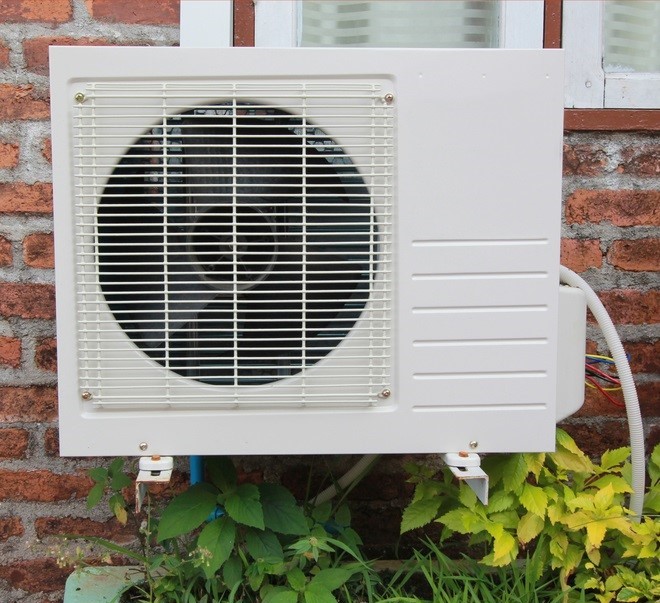

Absorbs heat from the air
Ground source heat pumps
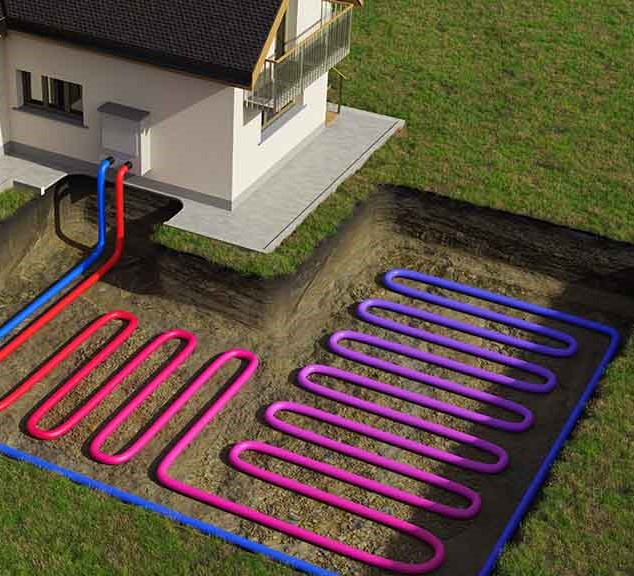

Absorbs heat from the ground
Heat pumps capture heat from the outside and transfer it around your home. The amount of electricity needed to operate is low compared to the heat they generate, making them highly efficient. However, how they actually get their heat positively and negatively affects a variety of factors.
Heat pumps: what are they, how do they work, and crucially, are they any good? We’re here to run down the highs and lows of this relatively new carbon-free heating solution.
Air source heat pumps
Resembling the appearance of an air conditioner, air source heat pumps are installed on the outside of a property next to an external wall. They vary in size depending on your home’s heating needs and can be used for both heating and cooling purposes, making them a versatile option for many types of properties.
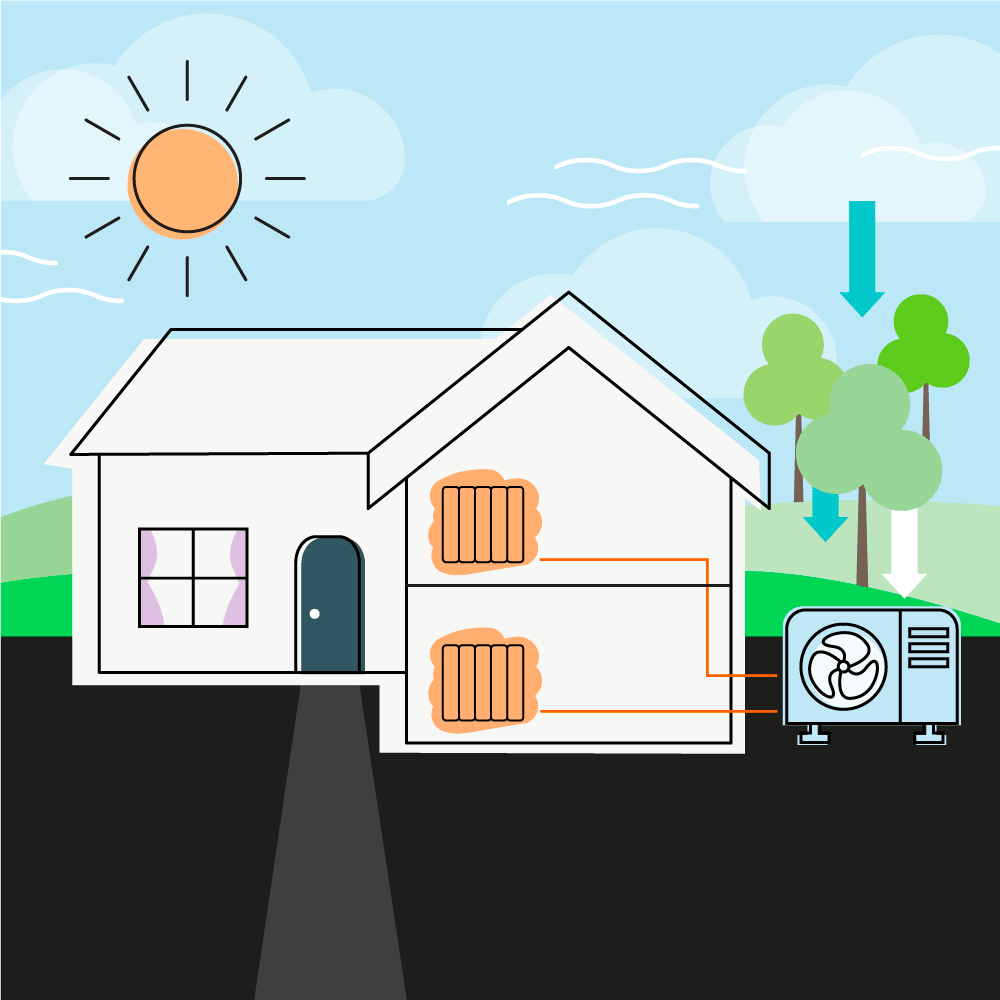

How do they work?
Air source heat pumps work similarly to refrigerators in the sense that they absorb heat in one place and release it in another. Using air from the outside, warmth is extracted through a compressor and transferred throughout your home. Although efficient, they do deliver a lower heat supply than other systems. For this reason, many homes with air source heat pumps also install underfloor heating or larger radiators to improve performance.
The two main types of air source heat pumps:
- Air-to-air – Air is transferred into your home via a fan system, which can be used for heating or cooling depending on the season.
- Air-to-water – Transfers air into your central heating system to provide hot water or space heating.
| Pros | Cons |
| Works as both a heater and cooler | High installation fees – costs up to £18,000 |
| Versatile – suitable for many types of buildings | High maintenance needs – requires yearly servicing as well as regular cleaning |
| Long lifespan – can last up to 20 years | Less efficient during cold weather – can ice over |
| Can be paired with a smart thermostat and controlled from a smartphone | Lower heat supply than other systems |
| Available with the Boiler Upgrade Scheme | Not suitable for poorly insulated properties |
| Can be used for water heating | Makes noise while in operation |
Ground source heat pumps
Ground source heat pumps use a network of pipes buried in your garden to extract heat from the ground, transferring it to your home’s central heating system. Since the ground stays at a constant temperature throughout the year, they don’t have to work on overdrive during winter, giving them a leg up over air source heat pumps in this regard.
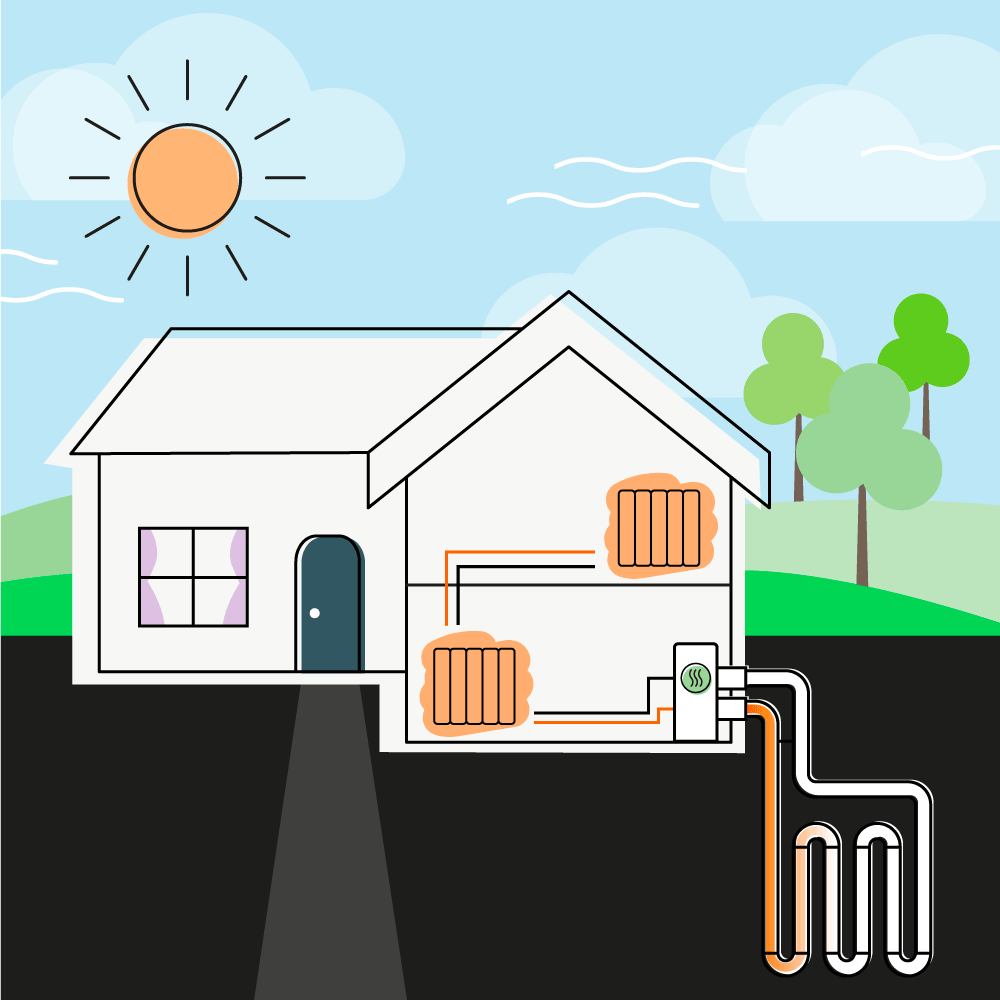

How do they work?
Pipes are installed horizontally or vertically – depending on the size of your garden – with a heat pump unit (roughly the same size as a fridge-freezer) fitted indoors. Extracting heat from the ground, this energy is turned into a liquid which circulates throughout the underground pipes and into the refrigerant. Warmth is compressed, raising the temperature, and a heat exchanger transfers it to your radiators or underfloor heating.
The two main types of ground source heat pumps:
- Horizontal closed loop – Pipes are buried in horizontal trenches 1-2 metres below ground. As it requires a large amount of space to work, these heat pumps are more commonly used in rural areas.
- Vertical closed loop – Narrow shafts (boreholes) are buried vertically around 50-150 metres deep. This is more expensive but works better in suburban areas where garden space is restricted.
| Pros | Cons |
| Increases property value | Very high installation fees – can cost up to £45,000 |
| Silent when in operation | Planning permission may be required |
| Long lifespan – can last up to 30 years | Complicated to install. Will involve significant work to your home and garden and can take several weeks to complete |
| Can be paired with a smart thermostat and controlled from a smartphone | Requires yearly servicing (£70-£150) |
| Available with the Boiler Upgrade Scheme | Efficiency affected by soil type – may require extra components to combat this |
| Can be used for water heating | Extra retrofitting may be required to improve your home's insulation |
Electric heating: What are the options?
While every electric heating system is 100% efficient at point of use, if you’re looking to maximise efficiency to the fullest, we always recommend a primary system that utilises these three main features:
Electric radiators and infrared panels always come out on top when it comes to efficiency, making them viable contenders when considering a low-carbon heating alternative. If you’re interested in lowering your home’s carbon footprint, pair your electric heaters with a green supplier or renewable energy source for 100% carbon-free heating.
Electric radiators
Electric radiators are the ultra-efficient, highly controllable equivalent of a typical central heating system. DIY-friendly and maintenance free, they’re the ideal primary heating system for homes. A vast range of wattages, styles, colourways and orientations allow them to integrate seamlessly no matter the size, design scheme, or heating requirements of a room.
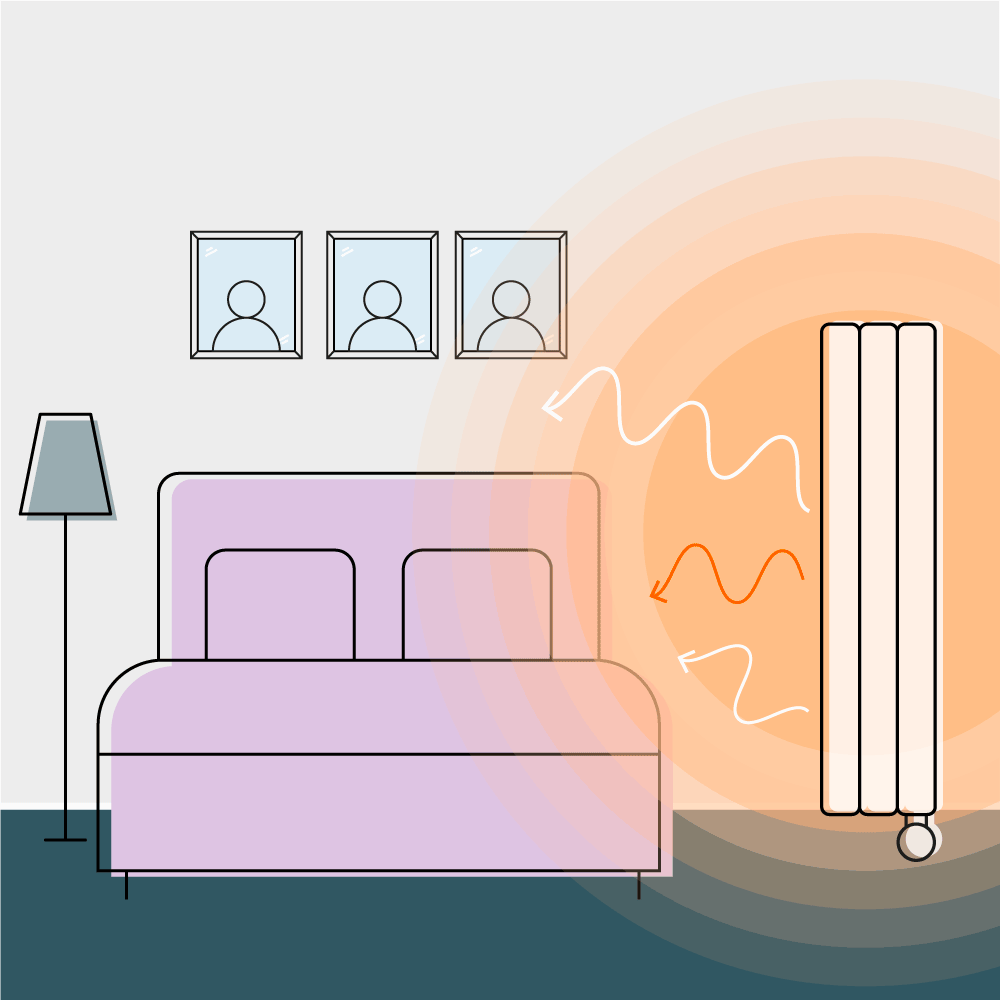

How do they work?
Electric radiators heat through a combination of convection and radiation, resulting in quick heat-up times and long-lasting warmth, so comfort levels are maintained even after the radiator has stopped drawing power.
The three main types of electric radiators:
- Dry thermal – Fitted with a lightweight, aluminium element, dry thermal radiators benefit from quick heat-up times and are ideal for portable use.
- Ceramic – Delivering half of its heat via radiation, ceramic blocks inlaid in the radiator body emit long-lasting warmth, particularly effective in hard-to-heat interiors.
- Oil-filled – Thermal fluid is warmed up by a heating element, distributing evenly throughout the radiator and into the room. With excellent thermal properties, temperatures are maintained for longer using less energy.
| Pros | Cons |
| DIY-friendly options and professional installation is a quick and simple job | Some radiator types can take longer to reach max temperatures |
| Doesn't require yearly servicing | Professional hardwiring is required for multiple heaters and installation in bathrooms |
| Energy-saving features contribute to cheaper heating | Can’t be used for water heating |
| Long lifespan – can last up to 15 years. The Haverland RC Wave even has a lifetime guarantee on the radiator body | |
| Heats through convection and radiation for responsive yet long-lasting warmth | |
| Suitable for retrofits and extensions. Can be used alongside an existing heating system | |
| Available with WiFi app and voice control for increased controllability and temperature management |
What are electric radiators? Check out our bitesize video.
Infrared panels
Discreet and slimline, infrared panels are the ultimate “use anywhere” system – mount them on the wall or ceiling, or opt for a freestanding unit to direct heat to the busiest areas. While slower to reach max temperatures, infrared panels don’t need to work at their full wattage to maintain comfort levels, making them particularly effective in lofty interiors. Since the heat they produce isn’t disturbed by air movement, you don’t have to worry about heat loss to air flow or high ceilings.
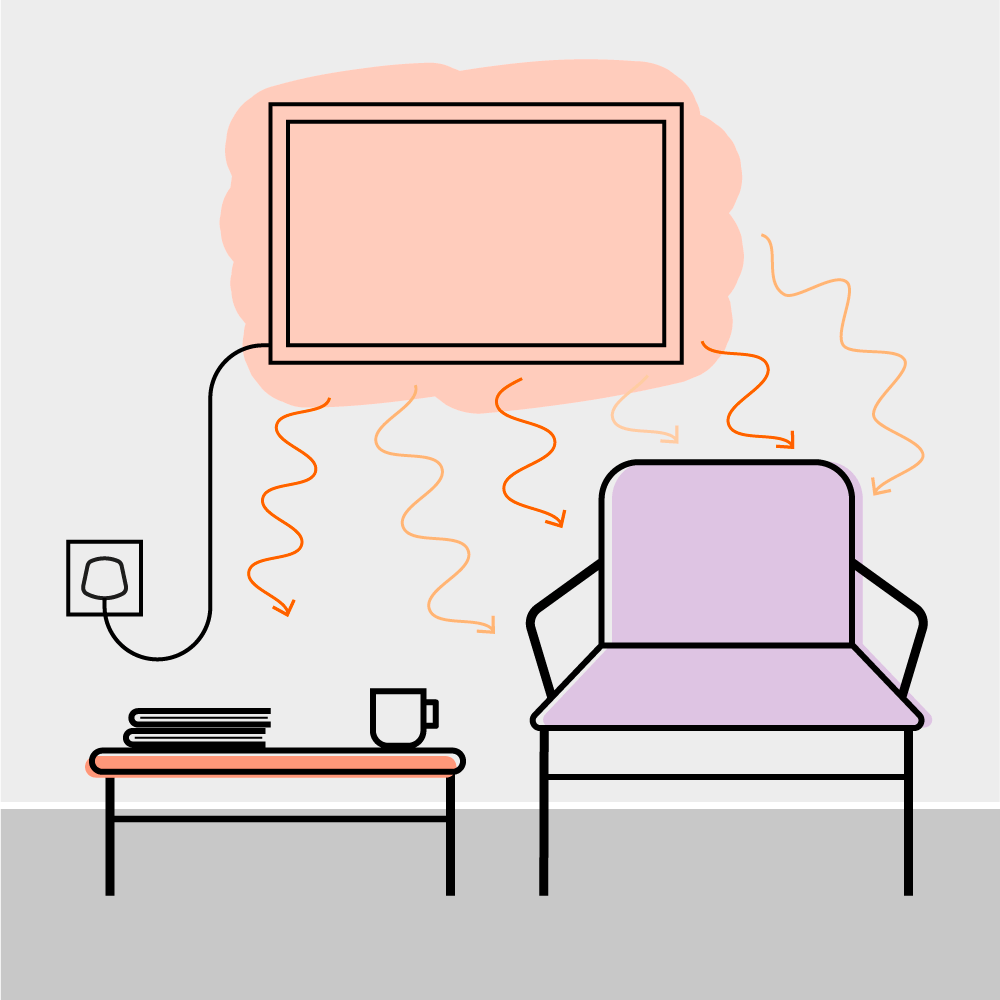

How do they work?
Infrared panels are fitted with a heating element distributed throughout their aluminium or glass casing. Using 100% radiant warmth, infrared travels in a wave to heat people, objects and surfaces directly, for warmth on a deeper level. Since radiant heat is easily absorbed by the fabrics of your home, infrared panels naturally combat damp and mould formation – making them particularly effective in bathrooms and kitchens which are prone to excess moisture.
| Pros | Cons |
| DIY-friendly options and professional installation is a quick and simple job | Takes longer to reach max temperatures than electric radiators |
| Heats through 100% radiation – warms people & surfaces directly | Professional hardwiring is required for multiple heaters and installation in bathrooms |
| Versatile installation – wall, ceiling & freestanding options | Needs a line of sight to work effectively |
| Slimline & discreet | Can't be used for water heating |
| Doesn’t require yearly servicing | |
| Available with WiFi app and voice control for increased controllability and temperature management | |
| Gentle on allergies; combats damp & mould |
What are infrared panels? Check out our bitesize video.
What's the verdict?
| Air source heat pumps | Ground source heat pumps | Electric heating | |
| Upfront cost | ★★☆☆☆ | ★☆☆☆☆ | ★★★★☆ |
| Simple installation | ★★☆☆☆ | ★☆☆☆☆ | ★★★★☆ |
| Low maintenance | ★☆☆☆☆ | ★★☆☆☆ | ★★★★★ |
| Stylish designs & colourways | ★☆☆☆☆ | ★☆☆☆☆ | ★★★★★ |
| Running cost savings | ★★★☆☆ | ★★★☆☆ | ★★★☆☆ |
| Efficiency in cold weather | ★★☆☆☆ | ★★★★☆ | ★★★★☆ |
| Efiiciency in poorly insulated homes | ★☆☆☆☆ | ★★☆☆☆ | ★★★☆☆ |
| Sophisticated control options | ★★★☆☆ | ★★★☆☆ | ★★★★★ |
| Heat-up times | ★★☆☆☆ | ★★★☆☆ | ★★★★☆ |
| Overall rating | ★★☆☆☆ | ★★☆☆☆ | ★★★★☆ |
While the government has hailed heat pumps as the heating of the future, installation costs and the UK’s current housing infrastructure limits suitability for the vast majority of households.
- Space restrictions – With such a large population and comparatively small amount of land to accommodate, existing homes and new builds have a tendency of being built close together with limited outdoor space. So, unless you live in a rural area or already have a large garden, heat pumps aren’t really an option. Air source heat pumps are more versatile in this regard, however, with high maintenance needs and a lower supply of heat, many households might not see much of an upside.
- High upfront costs – Even with government incentives like the Boiler Upgrade Scheme, heat pumps are still only accessible to those with the means to install them. With only a 35%-50% contribution to upfront costs, it’s no surprise that only 9,888 households out of the estimated 30,000 have taken up the offer since launch.
- Extra retrofitting – The type of home you have will also affect the suitability of heat pumps. If you have an older property, its structure might not accommodate the insulation required for optimal performance, which would require extensive replumbing – yet another cost homeowners would have to cover.
With only 37,000 heat pumps fitted in UK homes compared to the 2.2 million with electric heating, we’ll let the numbers speak for themselves. With affordable upfront costs, quick and unobtrusive installation, zero maintenance and superior controllability as standard, it’s no surprise that electric heating comes out on top as the low-carbon favourite.
Overhaul your heating with electric
Electric heating gives you ultimate control when it comes to making the switch to a low-carbon alternative. Efficient and cost-effective, homeowners have the option of doing it gradually, rather than having to find the time and money to retrofit their home and garden with heat pumps. Shop our electric radiators and infrared panels today or check out our full range of premium solutions. With electric, mix-and-match your heating and warm the rooms you want, when you want. For more advice on all things electric, don’t hesitate to get in touch with our team of experts.
Key learnings
- Air source heat pumps are versatile when it comes to installation possibility, but with a lower heat supply (particularly during cold weather) they’ll most likely need to work alongside another heating system.
- Ground source heat pumps are extremely efficient, but with such high upfront costs and complicated installation, they’re not suitable for the average UK household.
- Electric heating systems like electric radiators and infrared panels can be installed alongside an existing heating system, so the switch to a low-carbon alternative doesn’t have to be an immediate process.
- Electric radiators and infrared panels use radiant heat, contain a wealth of energy-saving features, and can be controlled via smart app control for greater heat management. With lower upfront costs and no maintenance necessary, they’re an accessible low-carbon alternative for average households.






